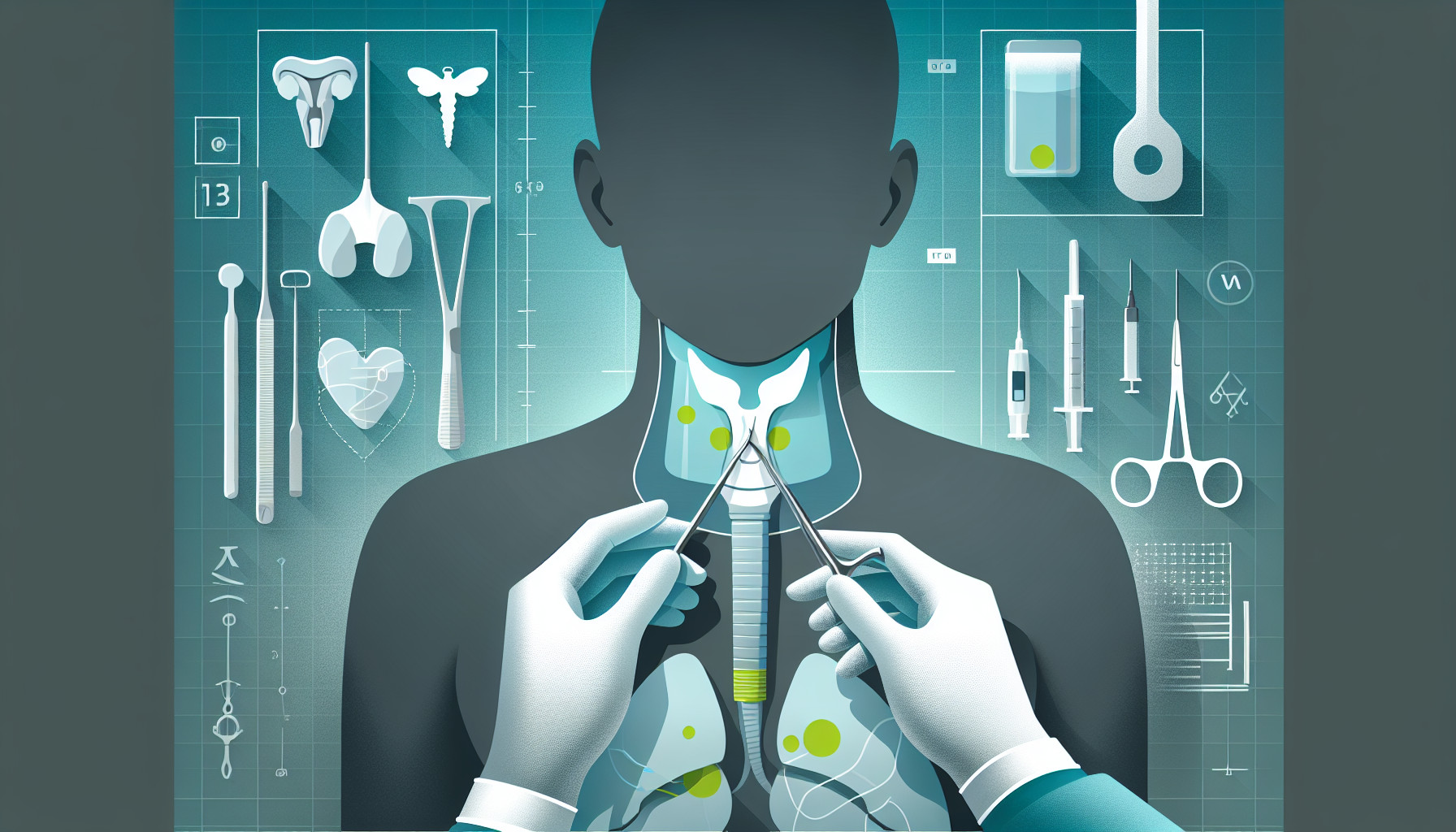Our Summary
This research paper examines the effectiveness and safety of two types of surgeries for treating non-toxic goitre (an enlarged thyroid gland) in adults: total thyroidectomy (TT), which removes the entire thyroid, and subtotal thyroidectomy (ST), which leaves a small part of the thyroid intact. The researchers looked at data from four previous studies which together included 1,305 patients.
Their findings suggest that the risk of the goitre coming back after surgery is much lower with TT than with ST. However, the risk of needing another operation because the goitre has returned is slightly lower in the ST group. Complications like permanent nerve damage and hypoparathyroidism (low levels of a hormone that helps regulate calcium in the body) were slightly more common in the TT group, while the rate of thyroid cancer was a bit higher in the ST group.
However, the authors caution that the evidence is limited and that more high-quality, long-term studies are needed to better understand these results. They also note that factors such as the surgeon’s experience and the techniques used in the surgery could affect the outcomes.
FAQs
- What is the difference between a total thyroidectomy and a subtotal thyroidectomy?
- Which type of surgery has a higher risk of the goitre returning?
- What were the noted complications of each type of surgery in the study?
Doctor’s Tip
A helpful tip a doctor might give a patient about thyroidectomy is to discuss the risks and benefits of total thyroidectomy versus subtotal thyroidectomy with their surgeon to determine the best option for their individual case. It is important to follow post-operative care instructions closely, attend follow-up appointments, and communicate any concerns or symptoms to your healthcare provider. Additionally, maintaining a healthy lifestyle, including a balanced diet and regular exercise, can support overall recovery and thyroid health.
Suitable For
Patients who are typically recommended for thyroidectomy include:
Patients with non-toxic goitre that is causing symptoms such as difficulty swallowing, breathing, or speaking.
Patients with a large or rapidly growing thyroid nodule that is suspicious for cancer.
Patients with hyperthyroidism (overactive thyroid) that is not well-controlled with medication.
Patients with thyroid cancer.
Patients with thyroid nodules that are causing compression of nearby structures such as the trachea or esophagus.
Patients with Graves’ disease, an autoimmune disorder that causes hyperthyroidism.
Patients with a family history of thyroid cancer or other thyroid disorders.
Overall, the decision to recommend thyroidectomy for a patient will depend on the specific circumstances of their condition and the risks and benefits of surgery. It is important for patients to discuss their options with their healthcare provider to determine the best course of treatment for their individual situation.
Timeline
Before thyroidectomy:
- Patient consults with a healthcare provider and undergoes a physical exam and imaging tests to diagnose the thyroid condition.
- Patient may undergo blood tests to evaluate thyroid hormone levels.
- Patient discusses treatment options with their healthcare provider, including the risks and benefits of thyroidectomy.
- Patient may need to undergo preoperative preparation, such as stopping certain medications or fasting before the surgery.
After thyroidectomy:
- Patient undergoes the surgical procedure, which may be a total thyroidectomy or subtotal thyroidectomy.
- Patient is monitored in the hospital post-surgery for any complications, such as bleeding or infection.
- Patient may experience symptoms such as hoarseness, difficulty swallowing, or temporary changes in voice due to damage to the vocal cords or nearby nerves.
- Patient may need to take thyroid hormone replacement medication for the rest of their life to regulate thyroid hormone levels.
- Patient follows up with their healthcare provider for regular monitoring of thyroid hormone levels and any potential complications.
- Patient may undergo additional treatments or surgeries if the goitre returns or if there are complications from the initial surgery.
What to Ask Your Doctor
- What are the risks and benefits of total thyroidectomy compared to subtotal thyroidectomy for treating my non-toxic goitre?
- What is the likelihood of the goitre returning after surgery with each type of thyroidectomy?
- What are the potential complications of total thyroidectomy, such as nerve damage and hypoparathyroidism?
- How does the risk of thyroid cancer compare between total thyroidectomy and subtotal thyroidectomy?
- What factors should I consider when deciding between total thyroidectomy and subtotal thyroidectomy, such as the surgeon’s experience and surgical techniques?
- Are there any long-term studies available that compare the outcomes of total thyroidectomy and subtotal thyroidectomy for non-toxic goitre?
- What is the recovery process like for each type of thyroidectomy, and how long can I expect it to take?
- Will I need to take thyroid hormone replacement medication after total thyroidectomy, and if so, what are the potential side effects?
- Are there any lifestyle changes or dietary modifications I should make after undergoing total thyroidectomy or subtotal thyroidectomy?
- What follow-up care will be necessary after the surgery, and how often should I have thyroid function tests to monitor my health?
Reference
Authors: Cirocchi R, Trastulli S, Randolph J, Guarino S, Di Rocco G, Arezzo A, D’Andrea V, Santoro A, Barczyñski M, Avenia N. Journal: Cochrane Database Syst Rev. 2015 Aug 7;2015(8):CD010370. doi: 10.1002/14651858.CD010370.pub2. PMID: 26252202
